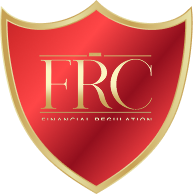Finance
Volatility Clustering: Why Markets Move in Patterns
Written by Financial Regulation Courses
Last updated: Jun 7, 2021 • 4min read
Financial markets rarely move in a random fashion. Instead, they exhibit periods of calm followed by phases of extreme turbulence—a phenomenon known as volatility clustering. This means that high-volatility periods tend to be followed by further high-volatility periods, and low-volatility phases tend to persist.
Understanding volatility clustering is crucial for traders, investors, and risk managers, as it influences market stability, portfolio risk, and trading strategies. This article explores the nature of volatility clustering, its causes, effects on financial markets, and how investors can manage the risks associated with it.
Understanding Volatility Clustering
Volatility clustering is the observation that financial markets experience alternating periods of high and low volatility, rather than a constant or random fluctuation. This contradicts the random walk hypothesis, which assumes price movements are independent of past trends.
In simple terms:
If the market is volatile today, it is likely to be volatile tomorrow.
If the market is calm today, it will likely remain calm for some time.
This pattern was first recognised in financial markets by Benoît Mandelbrot (1963) and later formalised in risk models such as the ARCH (Autoregressive Conditional Heteroskedasticity) and GARCH (Generalized ARCH) models.
The 2008 Financial Crisis: After Lehman Brothers collapsed, stock markets experienced sustained high volatility for months.
The COVID-19 Pandemic Crash (2020): Markets initially plummeted, then fluctuated wildly before stabilising later in the year.
Black Monday (1987): After the Dow Jones crashed 22.6% in a single day, extreme volatility continued for months.
Volatility clustering can be quantified using ARCH/GARCH models, which describe how past volatility influences future volatility.
The basic ARCH model formula:
σt2=α0+α1rt−12\sigma_t^2 = \alpha_0 + \alpha_1 r_{t-1}^2
Where:
σt2\sigma_t^2 = Variance (volatility) at time tt
rt−12r_{t-1}^2 = Squared return from the previous period
α0,α1\alpha_0, \alpha_1 = Model parameters
The GARCH model extends this to account for longer-term volatility persistence:
σt2=α0+α1rt−12+β1σt−12\sigma_t^2 = \alpha_0 + \alpha_1 r_{t-1}^2 + \beta_1 \sigma_{t-1}^2
Where β1\beta_1 represents the influence of past volatilities.
These models help traders forecast risk levels based on historical price fluctuations.
Causes of Volatility Clustering
Financial markets are driven by human emotions such as fear and greed, which often create self-reinforcing cycles of volatility.
Herding Behavior: Investors follow the actions of others, amplifying volatility during uncertainty.
Fear and Panic Selling: In downturns, mass selling leads to extended volatility periods.
Overreaction to News: Earnings reports, interest rate decisions, and political events create market overreactions, which trigger continued instability.
Example:
The 2008 crisis saw widespread panic selling, followed by sustained volatility due to continued uncertainty about bank stability.
Major economic events can lead to prolonged periods of volatility as markets react to new information and uncertainty.
Recessions & Financial Crises: Persistent volatility follows economic collapses.
Inflation & Interest Rate Changes: Central bank decisions create uncertainty.
Geopolitical Events: Wars, trade wars, and elections lead to market instability.
Example:
The Brexit referendum (2016) caused the British pound to collapse, triggering weeks of volatility in currency and equity markets.
The structure of modern financial markets contributes to volatility clustering:
High-Frequency Trading (HFT): Algorithmic trading reacts to market swings, amplifying volatility.
Liquidity Shortages: When liquidity dries up, price movements become extreme.
Example:
The 2010 Flash Crash saw the Dow Jones plunge nearly 1,000 points in minutes due to algorithmic trading spirals.
Excessive leverage makes markets more sensitive to small price changes, increasing volatility spillover effects.
Example:
The collapse of Archegos Capital (2021) due to margin calls created sudden volatility across global markets.
Effects of Volatility Clustering on Financial Markets
Investors face higher uncertainty about future returns.
Risk-adjusted returns decline due to increased fluctuations.
Value at Risk (VaR) models fail to capture prolonged volatility periods.
Underestimation of Tail Risks: Traditional models assume a normal distribution, but volatility clustering leads to "fat tails" (extreme market moves).
Asset correlations increase during crises, making diversification less effective.
"Safe-haven" assets may fail temporarily, as seen in the early 2020 COVID-19 crash when even gold and bonds dropped.
Options become more expensive as implied volatility rises.
Portfolio insurance strategies require higher costs due to persistent risk.
Strategies to Manage Volatility Clustering
Diversify into non-correlated assets such as commodities, cash, and defensive stocks.
Adjust asset weights dynamically based on market conditions.
Mean Reversion Trading: Buy assets after extreme price drops, assuming a return to average levels.
Momentum Strategies: Capitalise on continued high volatility trends.
Example:
Hedge funds trade VIX futures contracts to hedge against volatility spikes.
Buying Put Options: Protects against downside risk.
Using VIX ETFs (e.g., VXX, UVXY): Gains during market turmoil.
GARCH-based risk models dynamically adjust exposure based on historical patterns.
AI and machine learning detect volatility signals before they materialise.
Lower margin exposure to avoid forced liquidations.
Use stop-loss orders to cap potential downside risk.
Real-World Case Studies of Volatility Clustering
Market turmoil lasted for over a year, showing extended volatility clustering.
The VIX (Fear Index) hit an all-time high of 82.69, indicating extreme uncertainty.
Markets remained volatile for months after the historic 22.6% drop in a single day.
Bringing It All Together
Volatility clustering is a critical factor in financial markets, influencing asset allocation, risk management, and investment strategies. Recognising why markets move in patterns allows investors to make informed decisions and protect portfolios from extreme volatility events.
✔ Markets experience persistent periods of high and low volatility.
✔ Behavioral biases, economic events, and leverage contribute to clustering effects.
✔ Traditional risk models often fail during volatile periods.
✔ Hedging, dynamic asset allocation, and volatility-based strategies help mitigate risks.
By integrating volatility-aware investment strategies, investors can navigate market uncertainty and enhance long-term portfolio resilience.
Stock market professionals gain an edge with the Investment Advisor Certification.
Be the first to know about new class launches and announcements.


Financial writer and analyst Ron Finely shows you how to navigate financial markets, manage investments, and build wealth through strategic decision-making.
